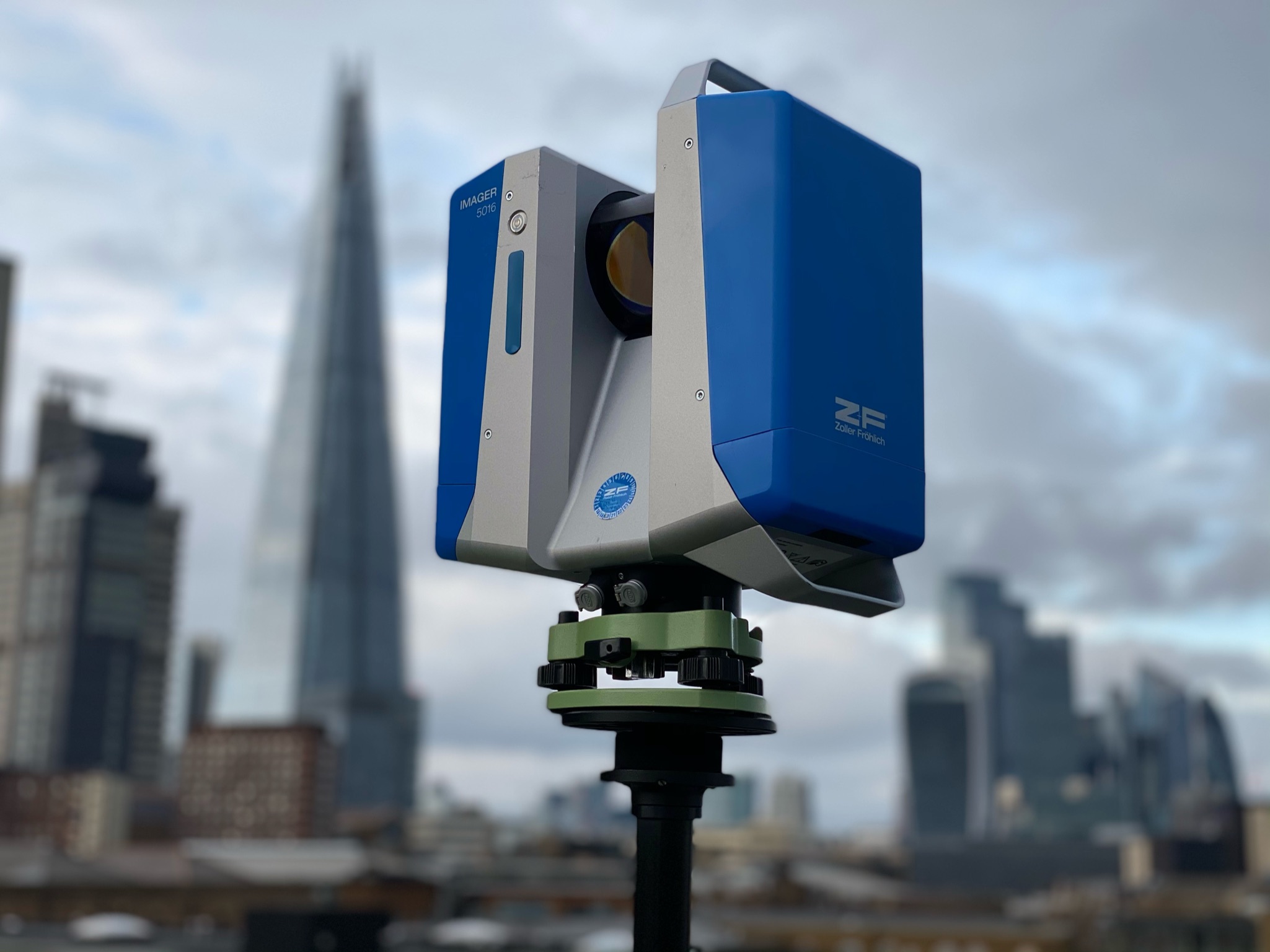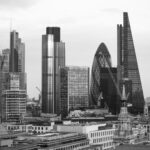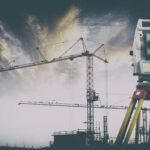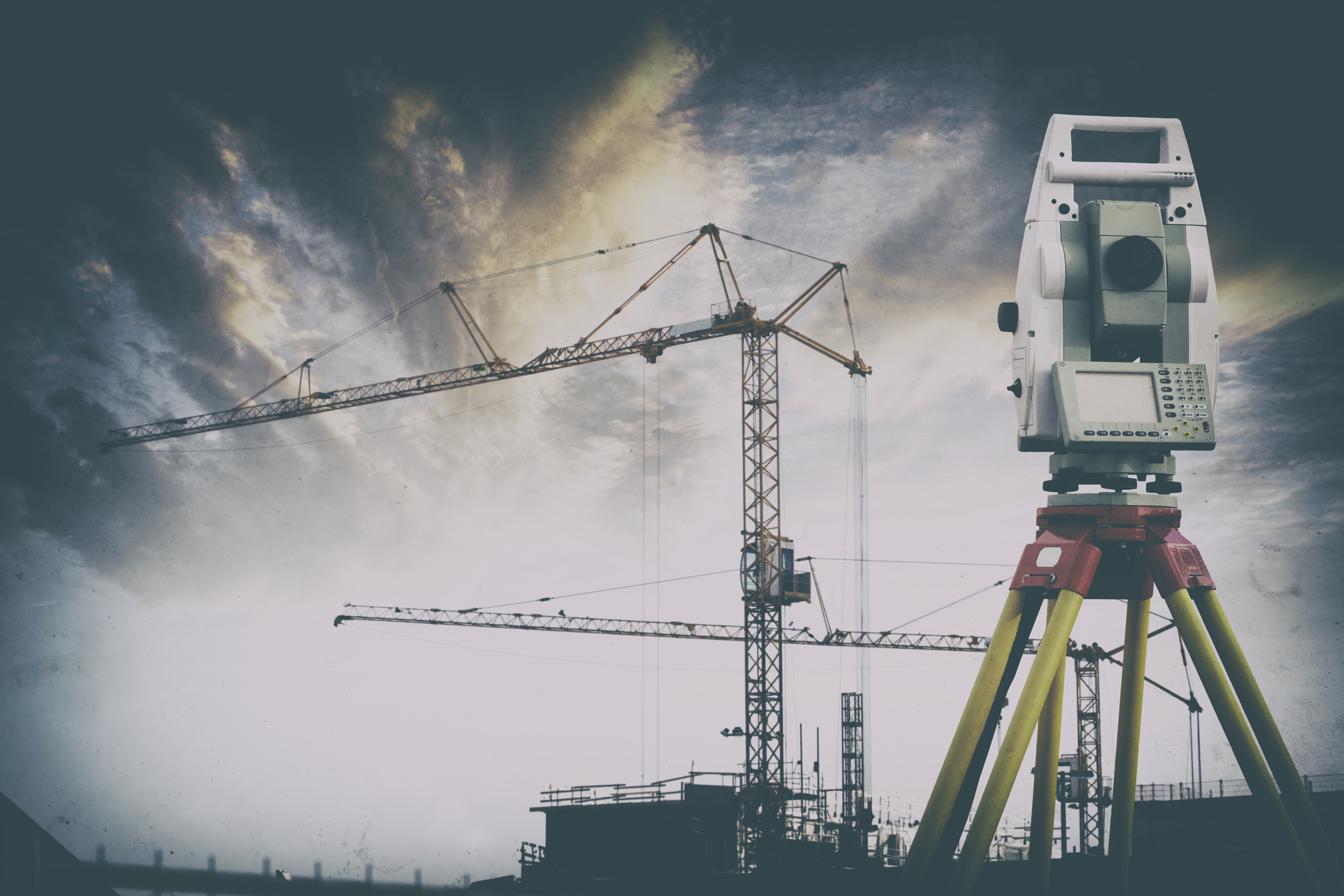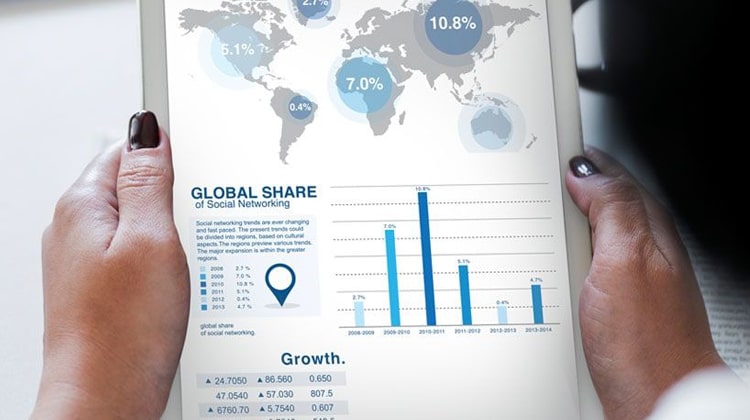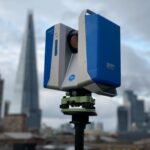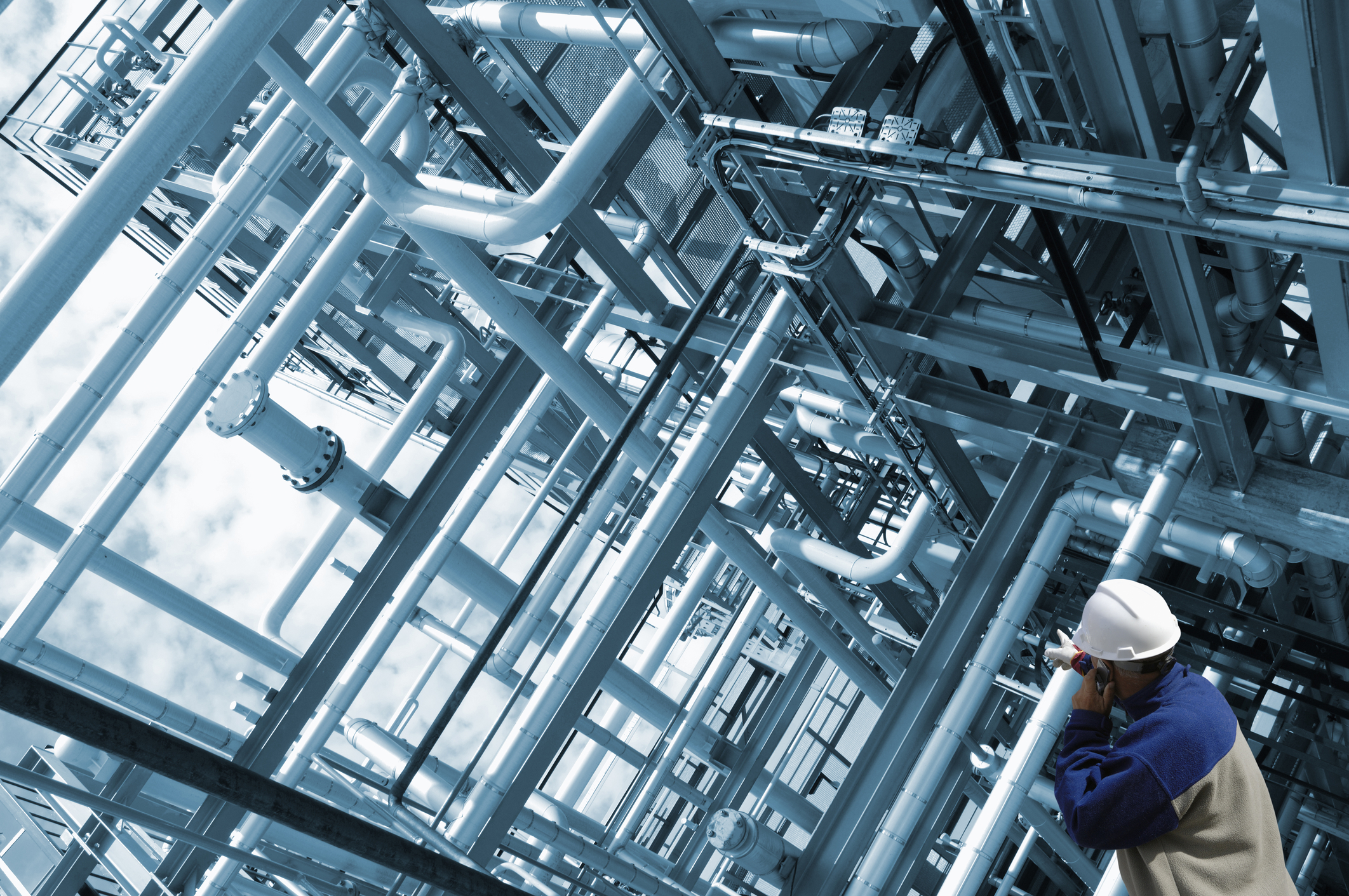Industry Applications of 3D Laser Scanning
3D laser scanning is transforming industries worldwide — delivering exceptional accuracy, speed, and detail for everything from construction and architecture to heritage preservation, engineering, and environmental management. This advanced surveying technology captures millions of precise measurements in seconds, producing highly detailed digital replicas that professionals can rely on for design, planning, and decision-making.
While the applications are almost limitless, the following examples show how different sectors are harnessing the power of 3D laser scanning to improve accuracy, efficiency, and project outcomes.
Geo Scan delivers industry-leading 3D laser scanning and measured building surveys throughout London, East London, Essex, and across the UK.
3D Laser Scanning for Architectural Design
Measured building surveys and 3D laser scanning provide architects with highly accurate as-built data for renovations, refurbishments, and new builds, enabling seamless integration into CAD and BIM workflows.
Applications:
- Measured building survey for architectural design
- As-built floor plans and elevation surveys for renovation projects
- 3D modelling and visualisation for planning permission submissions
- Orthographic image generation for urban design studies
3D Laser Scanning for Property Development & Real Estate
Developers and real estate professionals use 3D laser scanning to create immersive virtual tours and accurate site data for marketing, feasibility studies, and heritage documentation.
Applications:
- Virtual tour creation for property marketing
- Topographic land survey for development planning
- Heritage building documentation for preservation projects
- Feasibility study surveys for investment decision-making
3D Laser Scanning for Engineering & Construction
Engineers and contractors rely on 3D laser scanning for structural analysis, clash detection, and as-built verification to keep projects on time and within budget.
Applications:
- As-built survey for construction verification
- Structural steel and concrete dimension validation
- Clash detection for MEP coordination
- Progress monitoring scans for site reporting
3D Laser Scanning for Facilities Management
Facilities managers integrate 3D laser scan data into BIM to optimise space utilisation, manage assets, and plan maintenance activities with pinpoint accuracy.
Applications:
- BIM survey for facilities management
- Space utilisation analysis for workplace optimisation
- Asset management documentation with accurate floor plans
- Maintenance planning using as-built building data
3D Laser Scanning for Building Inspections & Assessments
3D laser scanning captures precise building condition data for pre-purchase inspections, structural health assessments, and energy performance analysis.
Applications:
- Building condition survey for insurance and compliance
- Energy performance assessment using point-cloud data
- Structural integrity assessment for safety planning
- Maintenance planning survey for property portfolios
3D Laser Scanning for Historic Preservation & Heritage Documentation
Heritage professionals use 3D scanning to digitally preserve historic sites, create conservation models, and monitor structural changes over time.
Applications:
- Heritage building measured survey for restoration planning
- 3D modelling of historic sites for conservation projects
- Digital archiving of architectural features
- Orthographic imagery for heritage planning applications
3D Laser Scanning for Interior Design & Space Planning
Interior designers leverage 3D laser scanning to develop accurate layouts, visualise proposed changes, and ensure compliance with accessibility standards.
Applications:
- Interior measured survey for refurbishment planning
- 3D model creation for interior visualisation
- Space planning for office and retail layouts
- Accessibility assessment surveys for compliance
3D Laser Scanning for Forensic Investigations & Insurance
Forensic teams and insurers use 3D scanning to document accident and crime scenes with exacting detail, supporting reconstructions and claims assessments.
Applications:
- Accident scene survey for insurance evidence
- Crime scene reconstruction using point-cloud data
- Fire damage assessment for claims settlement
- Structural damage documentation for legal reporting
3D Laser Scanning for Urban Planning & Development
Urban planners apply 3D laser scanning to map cityscapes, analyse building densities, and model proposed developments for sustainable growth.
Applications:
- Streetscape survey for regeneration projects
- Building density analysis for urban planning
- 3D city modelling for development visualisation
- Topographic mapping for infrastructure upgrades
3D Laser Scanning for Building Documentation & Archives
Accurate digital records created via 3D scanning serve as permanent archives for asset management, heritage preservation, and future renovation planning.
Applications:
- Archival building survey for heritage research
- Digital twin creation for facility lifecycle management
- CAD and BIM data integration for long-term storage
- Comprehensive as-built record creation
3D Laser Scanning for Oil & Gas Refineries & Petrochemical Plants
In hazardous industrial settings, 3D scanning captures precise facility layouts without disrupting operations, aiding maintenance and safety compliance.
Applications:
- Plant as-built survey for retrofit design
- Piping and equipment layout verification
- Hazardous area mapping for safety compliance
- Structural integrity assessment of refinery infrastructure
3D Laser Scanning for Marine & Offshore Industries
Offshore engineers and shipbuilders use 3D scanning to document vessel interiors, decks, and platforms for maintenance, refits, and safety inspections.
Applications:
- Ship interior survey for refit planning
- Hull deformation measurement and analysis
- Offshore platform condition documentation
- 3D modelling for marine equipment installation
3D Laser Scanning for Mining & Quarrying
Mining operations employ 3D scanning for volumetric analysis, terrain modelling, and safety monitoring, ensuring precise stockpile and pit measurements.
Applications:
- Mine volume survey for resource calculation
- Quarry face mapping for safety planning
- Land subsidence monitoring using 3D scanning
- Terrain modelling for extraction planning
3D Laser Scanning for Cultural Heritage Preservation
Archaeologists and heritage specialists use 3D scanning to record artefacts, monuments, and landscapes, creating digital preserves for research and conservation.
Applications:
- Archaeological site survey for conservation
- 3D artefact modelling for museum displays
- Cultural landscape mapping for heritage projects
- Virtual reality reconstruction for education
3D Laser Scanning for Transportation Infrastructure
Transport authorities use 3D scanning to document roads, bridges, tunnels, and railways for maintenance planning, safety assessments, and upgrade design.
Applications:
- Road and bridge as-built survey for maintenance planning
- Railway track geometry and clearance analysis
- Tunnel deformation monitoring for safety compliance
- Highway corridor mapping for infrastructure upgrades
3D Laser Scanning for Industrial & Manufacturing Facilities
Manufacturers use 3D scanning to optimise plant layouts, verify equipment installations, and conduct safety clearance analyses with unerring accuracy.
Applications:
- Industrial plant survey for production line optimisation
- Equipment installation verification using point-cloud data
- Workflow and safety clearance analysis
- Structural and machinery condition documentation
3D Laser Scanning for Power Generation
Energy providers rely on 3D scanning to capture complex geometries of turbines, boilers, and piping networks for retrofits, maintenance, and design verification.
Applications:
- Turbine and generator as-built survey for retrofit planning
- Cooling tower and piping network documentation
- Plant layout optimisation using 3D modelling
- Structural safety assessment of energy facilities
3D Laser Scanning for Healthcare & Hospitals
Healthcare facilities use 3D scanning for accurate floor plans, equipment layout optimisation, and accessibility compliance in renovations and expansions.
Applications:
- Hospital measured survey for refurbishment planning
- 3D model for medical equipment layout optimisation
- Accessibility compliance assessment for healthcare facilities
- Patient flow analysis using spatial data
3D Laser Scanning for Education & Research
Universities, schools, and research centres implement 3D scanning for facility planning, space utilisation analysis, and historic campus documentation.
Applications:
- School and university measured survey for redevelopment
- Laboratory and research space layout planning
- Heritage building documentation for campus preservation
- Classroom space utilisation analysis
3D Laser Scanning for Sports & Recreation
Sports venues and leisure facilities depend on 3D scanning for seating optimisation, sightline analysis, and crowd flow modelling to enhance spectator experience.
Applications:
- Stadium seating layout survey for capacity optimisation
- Sightline analysis for spectator experience improvement
- Crowd flow modelling for event safety planning
- Sports facility refurbishment planning
3D Laser Scanning for Retail & Commercial Spaces
Retailers and commercial property managers use 3D scanning to plan store layouts, optimise customer flow, and design merchandising spaces efficiently.
Applications:
- Retail store measured survey for refit planning
- Customer flow analysis for improved sales performance
- Visual merchandising layout optimisation
- Space planning for commercial office fit-outs
3D Laser Scanning for Telecommunications & Data Centres
Telecoms providers and data centre operators rely on 3D scanning for accurate spatial documentation, cooling system optimisation, and rack layout planning.
Applications:
- Data centre measured survey for capacity planning
- Cooling system layout optimisation using 3D data
- Telecoms mast and rooftop site surveys
- Cable and conduit routing planning
3D Laser Scanning for Schools & Educational Facilities
Primary and secondary schools adopt 3D scanning for building extension planning, classroom layout design, and playground safety assessments.
Applications:
- School measured survey for building extension planning
- Classroom space planning for curriculum delivery
- Playground and sports facility layout documentation
- Accessibility compliance assessment for schools
3D Laser Scanning for Care Homes & Assisted Living Facilities
Care homes employ 3D scanning to optimise room layouts, assess ergonomic compliance, and plan assisted living refurbishments for resident comfort.
Applications:
- Care home measured survey for refurbishment planning
- Accessibility and ergonomics assessment for resident comfort
- Room layout optimisation for assisted living
- Compliance documentation for care standards
3D Laser Scanning for Museums & Galleries
Museums use 3D scanning for exhibition design, artefact preservation, and virtual tour creation to enhance public engagement and outreach.
Applications:
- Museum measured survey for exhibition planning
- 3D artefact modelling for preservation
- Virtual tour creation for online engagement
- Lighting and display optimisation
3D Laser Scanning for Historical Sites & Monuments
Conservationists apply 3D scanning to capture structural details of monuments, monitor deterioration, and plan restoration projects with precision.
Applications:
- Monument measured survey for restoration projects
- Structural condition monitoring of heritage landmarks
- Digital archiving for heritage records
- 3D modelling for public interpretation and education
3D Laser Scanning for Film & Entertainment Industry
Film and VFX teams rely on 3D scanning for set design, location capture, and projection mapping preparation in virtual production workflows.
Applications:
- Film set measured survey for production planning
- Projection mapping surface preparation
- Location capture for CGI integration
- Studio space optimisation for filming
3D Laser Scanning for Theme Parks & Amusement Parks
Theme parks use 3D scanning to design rides, manage guest flow, and ensure safety compliance in high-traffic entertainment zones.
Applications:
- Ride and attraction survey for safety compliance
- Guest flow modelling for crowd management
- 3D modelling for immersive attraction design
- Maintenance planning using as-built data
3D Laser Scanning for Exhibition & Event Spaces
Event planners use 3D scanning for booth layout design, crowd flow analysis, and audiovisual equipment placement to streamline setups.
Applications:
- Exhibition hall measured survey for event planning
- Crowd flow and safety analysis for large gatherings
- AV equipment placement planning
- Space optimisation for trade shows and conferences
3D Laser Scanning for Airports & Transportation Hubs
Airports rely on 3D scanning for terminal design, passenger flow optimisation, and security checkpoint layout planning.
Applications:
- Airport terminal measured survey for expansion planning
- Passenger flow modelling for efficiency improvement
- Baggage handling system layout verification
- Security checkpoint optimisation
3D Laser Scanning for Agriculture & Farming
Farmers use 3D scanning for land contour mapping, irrigation design, and facility layout planning to boost agricultural efficiency.
Applications:
- Farm measured survey for irrigation planning
- Barn and storage facility layout documentation
- Land contour mapping for crop management
- Drainage and water flow analysis
3D Laser Scanning for Warehouses & Logistics
Logistics operators use 3D scanning for warehouse layout optimisation, racking design, and workflow analysis to maximise productivity.
Applications:
- Warehouse measured survey for layout optimisation
- Storage capacity analysis and racking design
- Workflow and aisle width optimisation
- Logistics hub refurbishment planning
3D Laser Scanning for Hospitality & Hotels
Hotel operators use 3D scanning for guest room layout design, event space planning, and accessibility compliance to enhance guest experience.
Applications:
- Hotel measured survey for refurbishment and fit-out
- Event space layout planning for weddings and conferences
- Guest room accessibility compliance assessment
- Furniture and amenity layout optimisation
3D Laser Scanning for Laboratories & Research Facilities
Research institutions employ 3D scanning to document lab layouts, verify equipment placement, and ensure safety protocol compliance.
Applications:
- Laboratory measured survey for refurbishment planning
- Safety clearance and workflow optimisation
- Ventilation and equipment layout planning
- Hazardous area mapping for compliance
3D Laser Scanning for Stadiums & Sports Facilities
Sports venue managers use 3D scanning for seating reconfiguration, accessibility planning, and sightline analysis to optimise spectator experience.
Applications:
- Stadium measured survey for seating reconfiguration
- Accessibility compliance for large venues
- Crowd flow modelling for safety planning
- Venue visualisation for new construction or refurbishment
Ready to Unlock the Power of 3D Laser Scanning for Your Project?
Whether you’re planning a complex construction project, preserving heritage architecture, or seeking precise as-built documentation, Geo Scan delivers the accuracy, speed, and expertise you need across London, East London, Essex, and the UK.
Contact us today to discuss your project and receive a tailored quotation.

